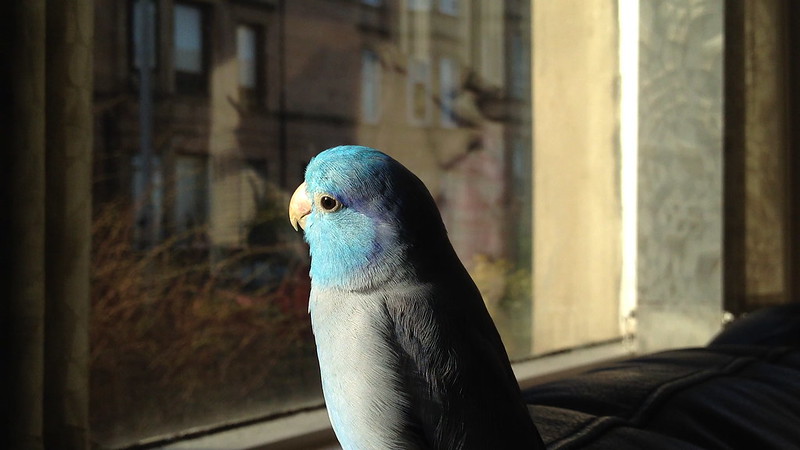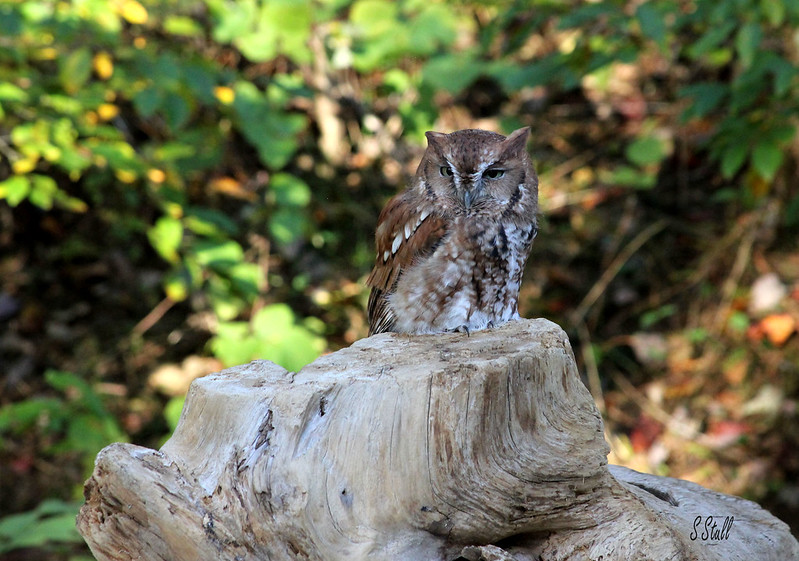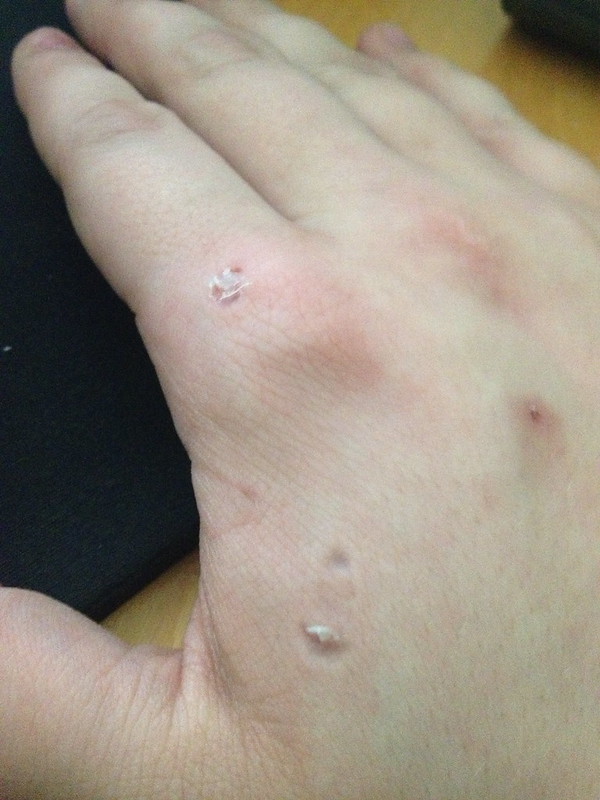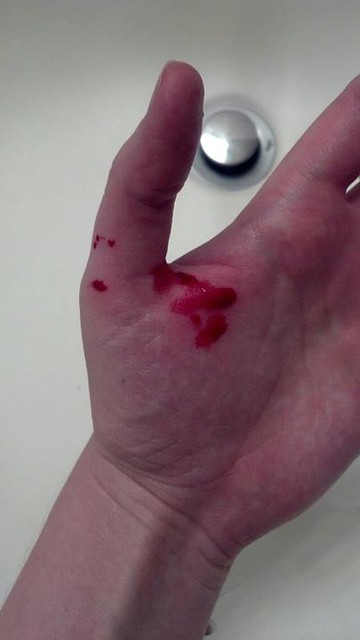
I feel that even small parrots – such as budgies and parrotlets – should be left out of the classroom.
Best and Worst Pets for Kids in the Classroom
Reminiscing on the classroom pets of my past, I’ve come to realise that perhaps some were not suited to the hectic learning environments of a school. As an adult, I’m able to think about what creatures I can to expose kids to without stressing out the animal. One of my biggest goals in opening a parrot sanctuary here in the U.S. is to focus on education.
With a rare few exceptions, parrots are not suited for a classroom. They need some pretty intensive care, an environment in which they feel safe, proper diet, and one-on-one time with training; they also have the potential to bite pretty hard, even when very small. That’s why I would like to start an educational programme in schools: take the parrots to the kids. This would provide students with a learning experience tailored to their needs, and allow the birds socialisation within their limits.
I believe that all kids should be exposed to animals. Helping to care for a pet will nurture many wonderful traits, including responsibility and empathy for another living being. The caveat is that I feel that no child should be left solely responsible for their pet, as they are still young and growing themselves!
That’s why a class pet can be so beneficial. In school, every kid can benefit. The real work will fall on the teacher, however, to ensure the animal’s health and happiness. Know that not all animals are suited to a classroom.
If you’re a teacher seeking a great classroom pet you can safely keep around kids, try asking these questions:
1. Can I afford a pet’s care in terms of time and money?
2. Are my students of an age where they’ll need of constant supervision while handling a pet?
3. What kind of a commitment am I looking for? Can I handle a lot of after-school care?
4. Will being around kids and their energy affect the animal negatively (if so, will it bite if stressed)?

Size does not make a good pet. After all, this screech owl is very small (just 5″ tall!) but you wouldn’t want HIM as a pet.
Without further ado:
Best pets for kids in the classroom:
1. Syrian Hamster: Syrians are known for their calm, gentle demeanour, unlike some dwarf breeds that are quite nippy. Hamsters are small, soft, and cuddly, and are a medium-level commitment (they need love and care just the same). It’s easy to kit one out for its lifetime, but do keep them singly, please. Gerbils, rats, and Degu pairs are another fun alternative.
2. Fish: a fish tank is wonderful addition to any classroom. There are many beautiful varieties of inexpensive underwater life that need just a clean tank, food, and a little enrichment in there. The educational opportunities are endless. I loved watching the fish as a child, and found it very soothing. Maintaining a healthy fresh water tank requires a low level of commitment.
3. Sea monkeys: the sea monkey colony provides all the same benefits that a fish tank does, with even less work. A sea monkey kit is easily purchased, and with one, you can raise your little fellows right from the eggs, teaching the cycle of life. Perfect for classrooms with allergy cases, or kids who may be wary of an animal, these are an ultra-low level of commitment.
4. A butterfly house: raising a butterfly through all the stages of its life before releasing it provides a wonderful and environmentally friendly way of teaching kids about biology. Low commitment; high education potential.

Photo credit: Brittany Donaldson. Snakes make good pets, but aren’t ideal for the classroom due to their potential to carry deadly salmonella.
Worst pets for kids in the classroom:
1. Parrots: parrots aren’t a great classroom pet due to the fact that they are an ultra-high commitment level. These needy, noisy animals are expensive to keep and feed, plus they do bite. Even a budgie (sometimes called a parakeet) depends on having its flock and quiet one-on-one time, so if a teacher isn’t able to commit to multiple hours of weekend and holiday care, this is a pet best left out of the classroom. To maintain its health, any parrot will need to see an avian vet once a year. Birds who are stressed or unhealthy may bite, scream, or pluck their feathers. Finches might be a slightly better alternative to a parrot; however, they can also be quite loud, and tend not to like to be handled.
2. Rabbits: bunnies are like birds. They are very intelligent creatures who have some pretty specialised needs. A rabbit requires more than just some hay in its cage. They need to see a vet, they live a long time, and represent a very high level of commitment that doesn’t typically mesh well with a teacher’s busy schedule.
3. Guinea Pig: the adorable guinea pig is a gentle pet that needs a lot of interaction to stay healthy and happy. They are social creatures, so are best for children over ten years of age who are ready for the responsibility of such a dependent pet. A guinea pig really needs time to play and explore even on weekends – because of this, they have a high level of commitment. Teachers who are set on having one in the classroom need to provide quality aspen bedding and a good diet.
4. Reptiles: snakes, lizards, turtles, and more have the potential to carry salmonella, so unless a teacher is able to guarantee the careful hand washing of each and every pupil, this is somewhat of a risk. With snakes, you also will need to feed mice or rats, depending on the size – and any reptile requires a specific set up, which can get pricey. If prepared for all this, however, turtles and lizards are popular pets with a low bite risk, and are a medium level of commitment.
What were your favourite classroom pets growing up?





16 comments
I might be a little late with this, but I disagree with you on the matter of small birds in a classroom. I have 2 budgerigars in mine, and my students are Autistic. They interact with the birds before lessons and during breaks and it’s amazing to see the bond they have ,the birds sit on their heads shoulders hand and arms. No bites ,nothing in fact they call the students by names . The cage is covered with a dark towel during lessons . The students let them out to fly around and gets them back inside the cage with no issues. Any animal has the potential to bite when feeling threatened. It’s just birds and you are better off being nipped by a bird than an hamster.
I used to go to a vet tech school that has birds (I think all of them were parrots), reptiles, and rabbits. Due to the nature of the school, there simply isn’t enough time to give these animals the attention that they need, with the exception of the reptiles. The reptiles are all very well mannered and cared for very well. (The school gets a lot of money.) The rabbits may very well be just one step above feral for as frightened of being handled as they are. Sadly, the birds are not getting the level of commitment they need. The resident yellow-headed amazon is notorious for his aggressiveness, pickiness with people, a bunch of problems. Reading a lot of articles on the blog, I’m just now realizing how poorly these animals are actually cared for, even if they’re technically given what they need to survive.
Wow! Can I relate to those images of the bitten hand! It came from my Pacific green parrotlet, Olivia, when I first received her — however with time and a lot of encouragement, she learned to trust me — even though she would love to nip me once every so often, just to let me know I shouldn’t always assume she’s well behaved – lol. My Green-cheek, Jack, is another story. He loves to bite, but I’m learning through the towelling technique that he is more comfortable with this (as am I, in that I’m less likely to wind up with welts). In fact, he likes to “fall” into the towel as he anticipates me approaching him to take him out for free time. I want to thank you for all the great tips here, I’ve learned many things about bird behaviours — and Jack is a green-cheek after all & perhaps just likes to bite to see what happens. Now, if I am bitten, I try not to react the same way in a knee-jerk reaction to Jack. By spending time with him, he’s beginning to trust me more — and I’m hoping that the future will be more rewarding for us both.
If you consider 30 children as pets, then you should not be a teacher. It seems that you never had a pet growing up and this is why you do not understand how important it is to teach children how to have compassion and learn how important it is to know how to care for them properly. If we as teachers, it does not matter that you are not the parents, do not show the children how animal live, love and survive in this world, then you are lacking in your profession.
I worked in a preschool and took in my Rose Breasted Cockatoo when he was young – I did this to socialize him and help teach the kids to respect animals – he did not stay there overnight and I did not bring him everyday – He loved it and picked up some words and hopped and danced during some of the songs I did with the preschoolers – he misses them terribly, They fed him snacks. He took to some kids better then others – I knew he would not bite but would retreat away from the kids if he didn’t want to interact. My Citron, I would not take because I could trust him not to bite. You really need to know your bird and the kids for that matter. i had a child from another room who would come and shake Andys cage so I had to teach him not to do that and he was not allowed to visit our room for awhile.
Caiques ( Especially Black Headed types) are like Pit Bulls, they can bite and with children very dangerous once their adult hormones kick in. Colorful as they may be, they can be easily excited ! Ask any Caique owner, even other parrots are bitty. If you own a Parrot, expect to get bitten a few times.
I raise exotic birds of all sizes and believe that they are a vital part of a child’s education. Children must be taught pros and cons of animals as well as disciplines and rewards. A perfect example: The other day my 12 year old son and I went to a local park in my hometown after visiting an I’ll family member. I also brought my 2 month old sulphur crested cockatoo named Godzilla. There happened to be many children groups there that day from Cristian Academies, day cares, and summer camps. Every group ended up coming get over and petting on Godzilla with no problems. I had raised him from birth, taught him to step up, shake and show his wings. (Thank you Chef for the disks) Each child was amazed at his attitude and demeanor. Not once did he lash out or attempt to bite. Most of the children held him and stroked his back, the timid of children at least walked up and pet his back. We were there for at least 6 hours that day and returned 2 other times for repeat socialization. I taught those kids everything I knew about birds and they sat, in amazement but very calm, as to what I had to say. Most of the kids wanted to buy my bird, and actually I could have sold him three times for 5 figures (but didn’t). I guess my point is that kids are going to learn about animals from somewhere. I think they should learn in schools from responsible and knowledgeable pet owners and not on their own or from a Dangerous or derelict animal. If any of the bloggers are interested in buying a new baby bird for their home or classroom, I would love to be a part of helping you to select that perfect bird. I have many sizes and color to choose from. 830-660-7245 Sean
I think in general this article covers some important information, but it also is spreading some potentially harmful misinformation regarding reptiles. Firstly, salmonella isn’t as big a risk with most reptiles as laypeople think (I work at a reptile zoo). I keep both birds and reptiles, both of which can be asymptomatic carriers of salmonella, and have worked at a reptile zoo for 7 years. Sometimes I forget to wash my hands every now and then, and I’ve been hospitalized once with salmonella. Where did I pick up my salmonella? From chicken I ate at a restaurant. My point is that most reptiles (the exception being aquatic turtles, which are more trouble than they’re worth anyway for most people) pose a relatively small risk of transmitting salmonella, and most won’t even be carriers of the bacteria, especially if they are captive bred by respectable breeders. Also, snake bites tend to look much worse than they actually are because proteins in their saliva promote extra bleeding (which tends to reduce the risk of infection). Most snakes that would be good choices for a class pet are quite docile and/or have heads smaller than many adults’ thumbs – thus they are incapable of inflicting significant damage (corn snakes and ball pythons would be good choices here). As always, any teacher will know their students capabilities best, but I know many amazing class pets that have been reptiles, and felt they were undeserving of the representation they received in this article.
A friend has a U 2 that she takes on classroom visits once in a while but he’s a very mellow fellow & has been well socialized.
I have taken my unbrella too to school for gen. science, biology, ecology, and art classes. The classes have been anywhere from K-12. She loves the attention and often decides to fly to a child or two that she fancies. She likes being touched and makes a great model for bird anatomy. As much as she enjoys the kids: 2 hours / 2 classes is her max. I have also seen amazing reactions between her and children with handicaps. I think that a parrot as a visitor is great, but to stay in the classroom would be too much for the class, the teacher, and the parrot. All three would suffer.
I bring my African Greys to school once a month. There are specific rules. They enjoy coming to school and the kids like observing them. I would never leave them at school overnight or long term, but visiting is fun!
I bring my Cockatoo to classrooms but I would never recommend him as a classroom pet. I teach the kids about the anatomy of birds and about the care of birds. A bird is a big commitment and are very messy. I dont think the custodians would like having a teacher keep a parrot. I think education at a young age will help the future of the parrot. I try to discourage ownership, too many people don’t understand parrots can live a very long time. My Cockatoo will probably out live me, my daughter is trained to handle him. She is prepared to take him when I no longer can care for him. Education is so important. I hope you will continue on with your desire to educate the public about these wonderful friends called parrots.
Had a teacher in elementary school who took her parakeet back and forth with her daily. It was great. He had a travel cage and a classroom cage, add well as a cage at the teachers home. We weren’t allowed to touch but we got to listen to his large vocab and look at his beautiful colors daily. Her is one of the reasons I own birds today. This teacher did it right. I cannot agree with this article, sorry.
I realize that this is not a school subject but a related one. I have several different kinds of parrots and always wished I could bring a few of them to an elderly care facility. These people love to see animals but I (as much as I wish I could) I have decided to not bring a parrot or two, etc. I only have one out of 10 birds that would even———-think———-of biting me but she gets mad when I leave her too long with someone else as for a vacation, only God knows what else could make her mad. Elderly people have very thin skin and it could be a disaster if someone (avian) decides to nip one of these dear people. I feel so badly I cannot share with others, particular these often lonely and bored people but it takes no time for a lawsuit!!!
I think if a classroom wants birds for pets, they should look into having a nest box and/or feeder installed against the window with a one-way glass in it so they can watch without requiring interaction from the class or teacher. My beloved African Grey, Merlin, came from a home with a daycare in it. He was hatched and raised there. He was traumatized from birth because of things getting stuck into his cage by little hands. The kids probably didn’t realize what they were doing, and the caregiver apparently didn’t stop it. Poor Merlin never got to the point where I could hold him and pet him. He just couldn’t build up the trust.
I had a parakeet in my classroom for 12 years and she could fly so if she didn’t want to hang out with them she’d fly back to her cage. 3 times and she got put up. She knew the rule and they knew the rule. She brought so much love and joy to my classroom and I think it kept her living much longer than she should have lived. I trained her at home before bringing her to school and I brought her home every weekend. She was so quiet at my house but talked up and sang at school. Best pet ever if done correctly!
Leave a comment